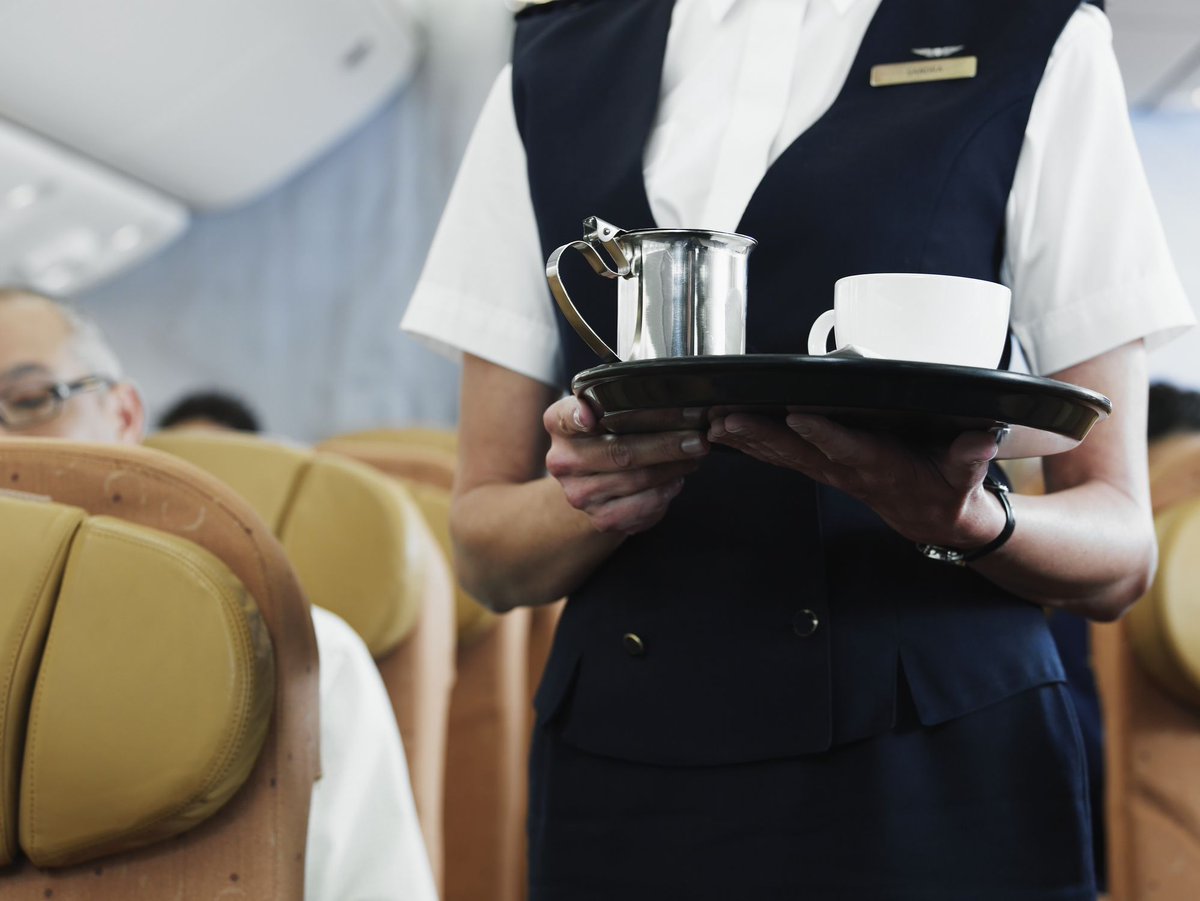You may want to stop at Starbucks before boarding your plane because a new study shows that airplane coffee isn’t the best. Reports show that the water on 15 percent of commercial airplanes has disease-causing pathogens.
In-flight coffee and tea are made from ordinary tap water and so far there hasn’t been any reports of illness, but planes will make emergency landings due to food-borne sickness. Like in 2011, when an American Airlines passenger died from eating contaminated chicken served on a flight. The family sued the airline.
Contaminated beverages and food on planes is common according to Dr. Karen Joubert, who cautioned passengers not to drink or eat on planes. In an interview, she said, “it will not only increase dehydration but it is most likely loaded with bacteria.”
Joubert recommends sticking to bottled water until the industry raises its beverage standards. Currently, the Airline Drinking Water Rule, introduced in 2009, only requires disinfection and flushing up to four times a year, all depending on the number of coliform samples taken.
“You would think they’d be emptied and cleaned at least once a day,” Dr. Charles Platkin said. “But this is not so. So water is just sitting for long periods of time in what appear to be not-so-clean tanks.”
RELATED: The ‘Turn Up’ On Flights Is Getting Pricey As Alcohol Prices Are On The Rise
Almost ten years later, the rule has yet to be updated.
Some airlines like Delta say they are trying to change the water rules in the industry. They disinfect tanks four times a year and employees attend “drinking water service training” annually. United claims to clean its water systems every 90 days and American Airlines tests and disinfects catering carts, trucks and water tanks on the regular. However, some flight attendants say they need to do more.
“We only truly clean once a year. I’ve been on planes that are constantly running. It’s almost like a subway in New York,” the anonymous flight attendant said. “We know things are dirty in the system and it takes a little while to clean it out.”
Since tea and coffee are served hot on the planes, boiled water may be the safest way to go, but there isn’t enough time for that. If flight attendants don’t heat the water at the right temperature, it could still be considered contaminated.
The Environmental Protection Agency is well aware of the issue and is working diligently to fix it, but there is more to it. Food professor Paul Dawson and microbiology professor Brian Sheldon said there are ample opportunities for water to get contaminated before even reaching the plane.
“First of all, airplanes fly to multiple locations and load drinking water at any of these destinations,” the team said. “Second, aircraft load water from airport watering points using temporary connections and finally, water may be stored at various locations at the airport and then transported to the plane in tanker trucks.”
